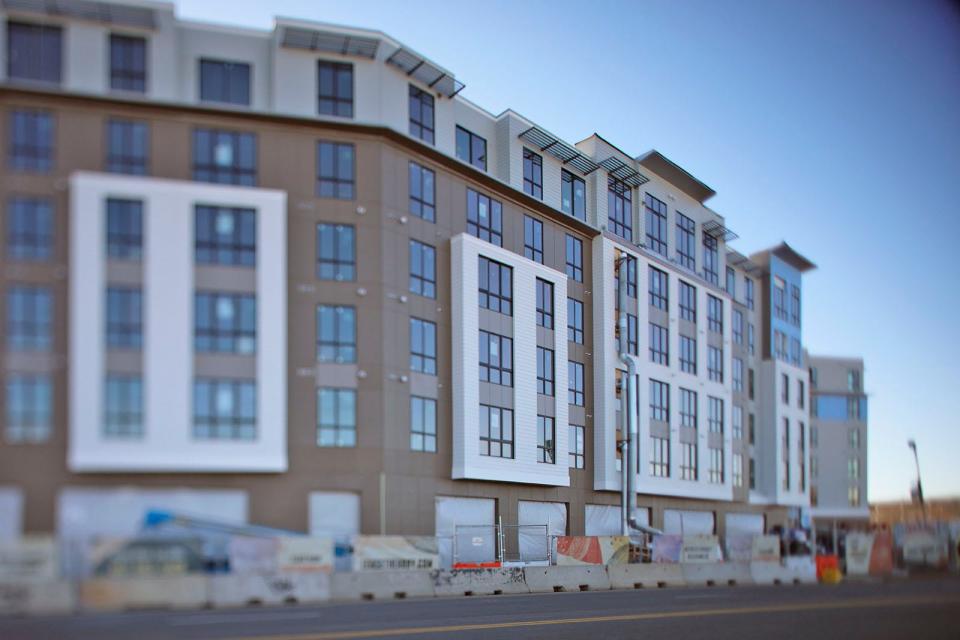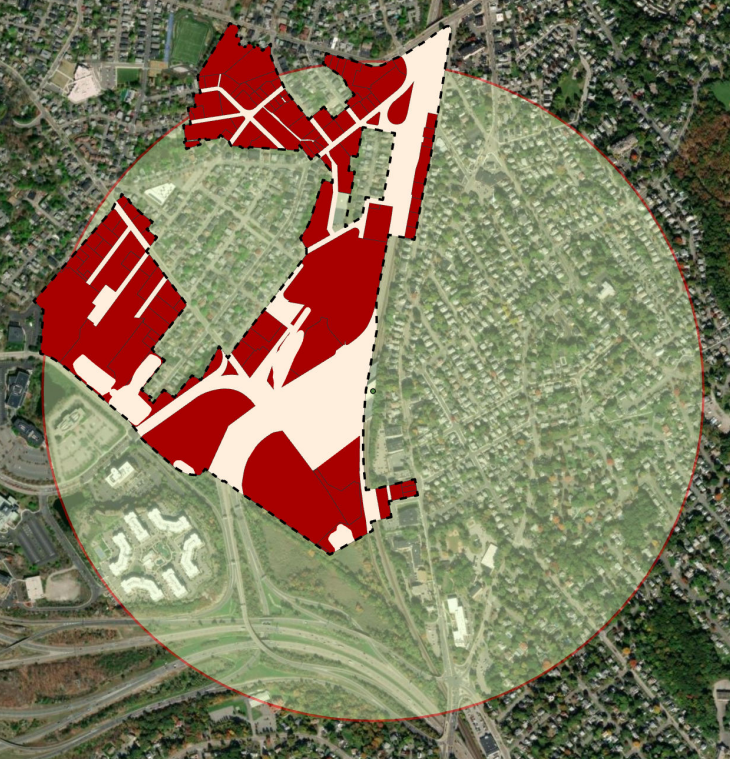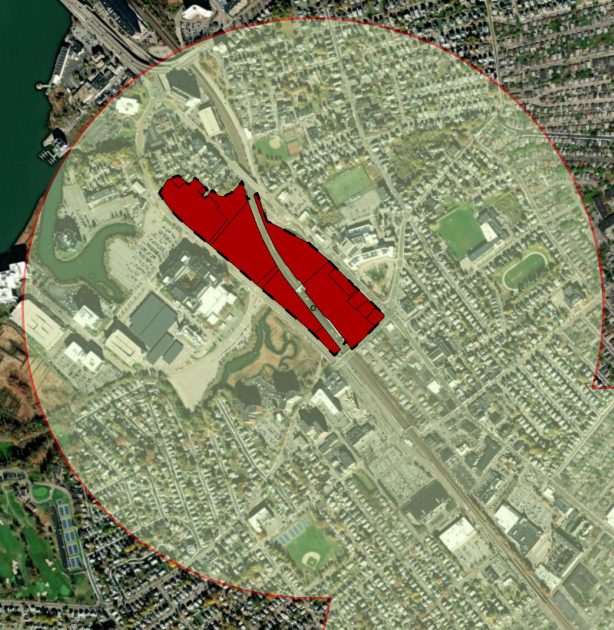Quincy City Council votes on multifamily housing districts. What we know
QUINCY − The city council Monday approved two zoning districts that will make it easier to build multifamily housing near the Quincy Adams and North Quincy MBTA stations.
The districts were designed by the city's planning department to comply with the state MBTA Communities Act, which was passed by the Legislature and signed by Gov. Charlie Baker in 2021. The law seeks to ease the state's housing crunch by requiring suburbs to open more land to potential multifamily development, most within half a mile of an MBTA station.
Deputy Planning Director Rob Stevens said the two districts combined create zoning capacity for 13,985 new units of multifamily housing.
With four Red Line stations, Quincy is designated a "rapid-transit community." As such, it has to create by-right zoning for more than 11,700 new units, roughly a quarter of its total housing stock, without special permits or variances from the planning board or the zoning board.

The council's unanimous vote Monday came two weeks before a state-imposed deadline of Dec. 31 for 12 rapid-transit communities to approve their plans.
Failure to approve the plan could have freezed Quincy out of state funding opportunities, such as MassWorks, the Housing Choice Initiative and others. Over time, that could amount to tens of millions of dollars in lost funding.
Milton voters approved a compliance plan Dec. 11. Braintree's council is scheduled to vote on a plan at its Dec. 19 meeting.
Two high-density housing districts near the North Quincy and Quincy Adams T stations
In June, City Solicitor Jim Timmins presented plans for a single district centered on the Quincy Adams T station in Quincy's Ward 4.
After consultations with Ward 4 Councilor James Devine, the planning department decided to exclude neighborhoods of single- and two-family homes. In all, 78 separate parcels were excluded from the new zoning plan.

Devine said many older residents have been living in these excluded neighborhoods for decades.
"We protected all of them," he said.
After removing the 78 parcels, planners needed to look elsewhere to create the mandated capacity for 11,700 new units. Focus shifted to North Quincy, where in 2016 the council created the transit-oriented overlay district that paved the way for The Abby, a mixed-use residential and commercial development with more than 600 apartments, a Target and a Paris Baguette bakery.

The North Quincy overlay district is much smaller than the one near Quincy Adams. It contains three office buildings and a handful of surface parking lots along Newport Avenue Extension, across the tracks from The Abby. It also includes a bank, a fire station and the McDonald's building on Hancock Street across from North Quincy High School.
The new law's regulations
To comply with state law, the planning department set a minimum of 325 square feet per dwelling unit within the proposed overlays. Comparing this figure with other large Quincy developments, Stevens said The Abby's smallest unit is 497 square feet, while the smallest unit at Alister Deco on Burgin Parkway is 558 square feet.
The Giving Season: Can you Lend a Hand to your South Shore neighbors in need?
Ready, set, action: Matt Damon, Casey Affleck shoot scenes in Quincy
"Three-hundred-and-twenty-five is dense, but in the range of what to expect," Stevens said.
In the overlay districts, there will be a 10,000-square-foot minimum lot size for multifamily projects, and a minimum 10-foot setback requirement on all sides. The height limit will be eight stories.
What the proposed overlays do and do not change
Timmins said the changes allow multifamily housing as of right, meaning developers will not need to get approval from local permit-granting authorities.
However, projects will still be subject to site-plan reviews by the planning board. Timmins said the board will be able to "condition (a project) in a manner where it will work in the neighborhood" but will not be able to impose "unreasonable requirements or undue delays."
Housing crisis: Braintree Planning Board recommends new zoning for multifamily housing, with changes
Housing crisis: State closes overflow shelter. Homeless migrant families moving to Quincy
Echoing Timmins, Stevens said the city's limited influence through site-plan reviews will prevent a "Wild West" situation.
Stevens also emphasized that the changes do not compel the city to create any new units or supporting infrastructure. Rather, the change relaxes zoning requirements to encourage housing creation by private developers and property owners.
'The T is outdated.' Residents and councilors express criticisms
Quincy resident Maria Mulligan criticized the zoning change as a "reactionary approach" to housing shortages that would substantially increase population without first understanding impacts on individual neighborhoods, schools and traffic.
Mulligan criticized the law for basing its call for denser housing on the presence of an MBTA system that in theory can support a larger and denser population.
"The T is outdated," Mulligan said. She said her commute from South Station to Quincy Center, which once took 20 minutes, now takes an hour.
"Quincy should demand that the state address the troubles with the T before we do anything," she said.
Ward 3 Councilor Ian Cain reiterated criticism of the law that he raised last May.
"This is still crazy, that we're being forced to put this in place when other communities have not fulfilled their obligations from the get-go," Cain said.
Thanks to our subscribers, who help make this coverage possible. If you are not a subscriber, please consider supporting quality local journalism with a Patriot Ledger subscription. Here is our latest offer.
This article originally appeared on The Patriot Ledger: Quincy council approves multifamily zoning districts mandated by state

